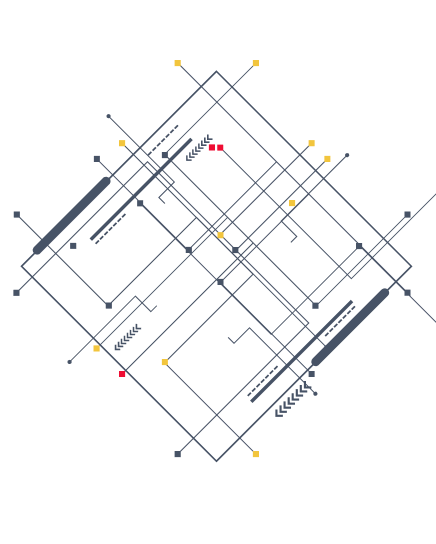Despite advancements in cybersecurity solutions for bank transfers and plastic cards, ATM fraud remains a persistent issue. Cybercriminals continue to exploit vulnerabilities in ATMs, using techniques like skimming, card trapping, and malware attacks to steal from unsuspecting users. However, the ATM industry is fighting back with innovative technologies, and Artificial Intelligence solutions are leading this charge.
While AI is estimated to contribute an annual value of 2.8 to 4.7 percent of the sector’s total revenues to the global banking industry, bank customers have largely become accustomed to interacting with chatbots. These robotic assistants efficiently handle their inquiries through online messaging systems. On a larger scale, financial institutions integrate AI for streamlining labour-intensive tasks like coding, drafting pitch books, compiling regulatory reports and take advantage of AI for fraud prevention in ATMs.

AI ATM systems: Enhancing Security
Japan-based Hitachi-Omron Terminal Solutions has been at the forefront of introducing an AI ATM with groundbreaking features to enhance security and prevent fraudulent activities. These anti-fraud AI advancements include both internal and external upgrades to ATM terminals ensuring a robust defence against criminal activities. Thus, Hitachi’s AI ATM is outstanding though its advanced facial and voice recognition system and is powered by deep machine learning solutions enabling the system to memorize vast amounts of data, including images and patterns from past fraudulent activities. To prevent criminals from concealing their identity, the AI ATM systems require users to remove accessories such as glasses, hats, or other items that obstruct recognition. Anti-fraud AI denies access to ATM until these conditions are met ensuring accurate identification. Further safeguarding transactions, AI for fraud detection in the ATM system also includes countermeasures against electronic devices dishonest individuals may use. Notably, AI for fraud prevention goes beyond behavioural aspects. For instance, it can detect not only if a person is talking on the phone but also assess the nature of their conversation. This capability helps identify potentially fraudulent or suspicious activities in real-time. Hitachi’s AI ATM systems are also designed to continuously learn and improve from new incidents as they process more data.
A real-life AI ATM is located in Aichi Prefecture, Honshu, Japan. According to the local police chief, this innovative feature allows the machine itself to play an active role in crime prevention, marking a significant step forward in ATM security.
The current landscape of ATM AI Fraud Detection
As AI ATMs are becoming increasingly sophisticated to enable combatting various types of fraudulent activities, here is an overview how anti-fraud AI is leveraged for ATMs:
- Face and Biometrics Detection Technologies: these AI modules verify the identity of users by comparing facial features against stored biometric data.
- Anomaly Detection in Transaction Patterns: machine learning algorithms establish a baseline of normal user behaviour and transaction patterns.
- Object Detection to Prevent Physical Fraud: object detection algorithms identify suspicious objects or activities near ATMs.
- AI for Synthetic Identity Fraud Detection: AI uncovers fake/synthetic identities and prevents fraudulent activities before they occur.
Benefits AI Fraud Detection for ATM
Below are some key benefits of integration of AI in fraud detection into ATM:
Identifying Attack Precursors
AI-assisted ATM systems are capable of analysing vast amounts of transaction data to identify patterns and anomalies that may signal potential fraud for financial institutions.
Enhancing Threat Intelligence
AI for fraud detection enhances threat intelligence by continuously learning from new data and adapting to emerging fraud tactics. This dynamic approach allows banks to stay ahead of fraudsters.
Strengthening Access Control and Password Practices
AI ATM ensures monitoring access attempts and ensuring that PIN code practices are robust, thereby reducing the risk of unauthorized access.
Minimizing and Prioritizing Risks
Due to AI solutions, financial organizations can assess and prioritize risks more effectively. By evaluating the likelihood and potential impact of various threats, banks can allocate resources to the most critical areas, ensuring a more efficient response to fraud.
Automating Threat Detection and Response
AI makes it much faster to identify and respond to ATM transactions threats. This automation not only speeds up the response time but also allows human analysts to focus on more complex cases that require deeper investigation.
Increasing Human Efficiency & Effectiveness
By leveraging AI tools, human analysts can enhance their efficiency and effectiveness. AI can handle routine monitoring tasks, allowing professionals to concentrate on strategic decision-making and complex fraud investigations, ultimately leading to better outcomes for financial institutions.
AI for Fraud Detection in Trading: Smarter Investment Strategies
In 2017, Michael Harte, then Barclays’ group head of innovation, highlighted that AI enables the use of vast amounts of high-velocity data to outsmart competitors and deliver enhanced value to customers. For traders, this capability is crucial, as trading opportunities often require immediate action; algorithms can be programmed to seize these opportunities swiftly and effectively. AI in custom trading software development adds additional value through bringing smarter strategies and ensuring that they remain competitive in a fast-paced market environment.
Another case study comes from Switzerland-based UBS bank, which leverages AI to analyse extensive arrays of market data to identify trading patterns, allowing it to formulate new strategies for trading volatility on behalf of its customers. By harnessing the power of machine learning, UBS’s AI system continuously improves its trading performance, ultimately leading to greater market returns for the bank’s trading division.

The Broader Impact of AI for Fraud Detection in Banking
While it’s true that AI, or blockchain development solutions, or Big Data have become buzzwords across various industries, there lies a significant opportunity for genuine transformation beneath the surface hype. With advancements in infrastructure for data mining and specialized hardware to support sophisticated AI systems, the banking sector is beginning to recognize how AI can fundamentally reshape its operations. Apart from promising AI detection capacities and proactive fraud detection, banks enjoy significant financial implications. One dollar fraud is estimated to cost financial institutions $4.41 spent for investigation, legal and processing efforts. AI for fraud prevention minimizes these losses enhancing operational costs efficiency.
Future Trends of AI in Fraud Detection
As technology evolves, AI for fraud prevention will further revolutionize ATMs and banking software development by leveraging advanced algorithms and machine learning. AI-driven fraud detection tools will continue to adapt to new fraud patterns, ensuring robust security in financial systems. Future trends will also include enhanced predictive analytics, real-time monitoring, and anti-phishing measures. Below we present our overview of these trends.
AI-Powered Real-Time Fraud Detection
AI-powered real-time fraud detection systems will stay at the forefront of financial software development services as they enable swift actions to protect customers and financial institutions from fraud.
Facial Recognition and Biometric Security
Just like AI-powered real-time fraud detection solutions, facial recognition technology will remain the leading edge for security for ATM transactions.
Behavioural Biometrics for User Verification
Behavioral biometrics solutions will become more sophisticated to enhance user verification by analysing unique interactions with ATMs, like typing and touch screen habits, and creating profiles to detect anomalies.
Deep Learning for Skimmer and Camera Detection
Deep learning techniques will be increasingly used to detect skimming devices and cameras on ATMs. By training neural networks with extensive image and transaction data, these systems can recognize patterns that indicate fraudulent hardware.
AI-Enhanced Anti-Phishing Measures
Anti-fraud AI will enhance anti-phishing measures to identify and block phishing attempts targeting ATM users. These systems will ensure analysis of communication patterns and detect suspicious URLs, emails, or messages that may deceive customers into revealing sensitive information.
Predictive Analytics for Fraud Prevention
Predictive analytics in ATM fraud prevention will disrupt the way past data is analyzed to spot high-risk transactions, enabling banks to reduce fraud and boost customer trust.
AI-Powered Automated Response Systems
AI-powered automated response systems will extend the capacities of AI ATM systems due to their functionalities to freeze accounts, issue alerts to customers, and notify bank personnel immediately upon identifying suspicious activities.
Conclusion
AI ATMs are not just a trend: it’s a transformative shift that is redefining the service and benefiting users and institutions alike. Financial institutions harness AI to generate value for their customers and stakeholders, all while tackling the ATM-related most pressing safety challenges. We can anticipate even more advanced functionalities and robust security, paving the way for a more convenient and secure AI-driven banking future.
FAQs
What is an AI-driven ATM?
AI-assisted ATMs are equipped with AI algorithms that analyze data from multiple sources, such as user interactions, sensor outputs, and transaction records. Thus, the AI ATM is capable of making informed decisions from fraud prevention to prediction of customer needs.
What makes AI-driven ATMs more secure than traditional ATMs?
AI-driven ATMs ensure transaction data analysis in real-time to pinpoint suspicious activities and thwart unauthorized access to accounts. Considering the baseline of normal transaction behaviours, anomality is detected and flagged to signal fraud.
Are there privacy concerns with the AI technology?
As AI solutions advance, they present both opportunities for enhanced business performance and concerns related to data privacy. Financial organizations need to adhere to respective regulations while striking a balance between fostering innovation and maintaining consumer confidence.









